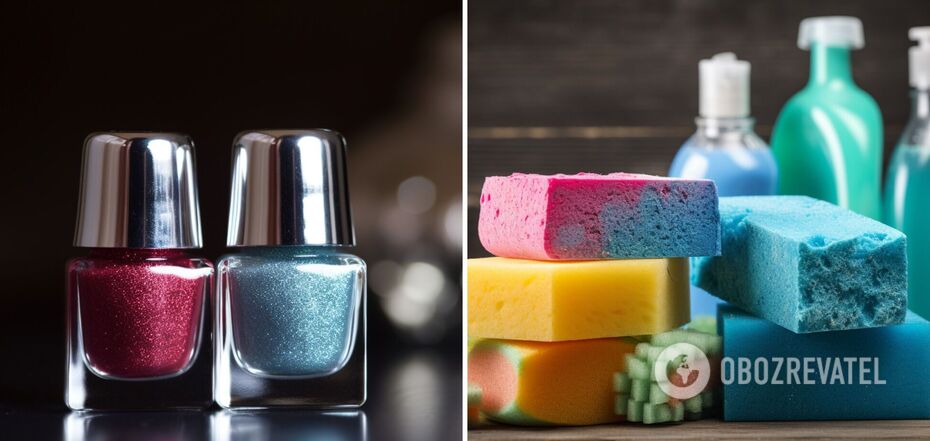Life
How to remove nail polish stains from various surfaces: a collection of life hacks
Nail polish, if it lands somewhere other than its intended destination, leaves behind a very persistent stain with a highly saturated pigment. The first idea that comes to mind when you need to remove such a stain is to use nail polish remover, but it can damage some types of surfaces, such as plastic or painted objects.
Sante Plus has collected a few life hacks on how to remove nail polish marks on different surfaces using improvised tools. These methods can work on fresh stains and also remove dried varnish.
How to prepare the stain for cleaning
If the nail polish has not dried, gently blot it with a paper napkin to absorb as much liquid as possible. Do not rub the stain, as the pigment can then penetrate deeply into the surface, especially if it is a stain on textiles.
First, scrape off the dried nail polish mark as much as possible with a knife. The less residue there is on the surface, the easier it will be to clean. For some surfaces, this may be enough.
What can be used to remove nail polish marks
Rubbing alcohol, as a strong solvent, can clean this type of contamination from most surfaces. It can even be used on plastic, wood, and textiles, as well as painted or varnished surfaces. But do not rub the stain with alcohol. It is better to repeat the treatment patiently with a cotton pad or stick until no trace of the varnish remains.
Adhesive tape will help remove the remnants of dried varnish. To use it, simply stick it to the stained area where you have scraped off the bulk of the stain and tear it off immediately. Small particles of dry varnish should remain on the sticky side. Repeat this procedure until the desired result is achieved.
A chemical solvent such as white spirit or gasoline can also work on varnish. But in this case, it should be tested on an inconspicuous area of the contaminated object. Such solvents can, for example, damage the color of the fabric. And one more caution - such substances should be used only in well-ventilated areas.
Hydrogen peroxide can give good results on light textiles, especially carpets. It must also be tested for the safety of the contaminated item, and then it can be applied to the stain with a pipette and collected with a dry cloth. Rubbing the stain with peroxide is not recommended. It is better to repeat the cleaning several times.
Hairspray can also be very effective against nail polish stains. Spray it generously on the stain, gently rub the stain with a soft brush, and rinse off the residue with a damp cloth. To enhance the effect, you can add a couple of drops of medical alcohol to the nail polish.
White vinegar can remove traces of nail polish on textiles and hard surfaces. It is delicate enough even to clean colored items. But it's still worth testing it on an inconspicuous area.
From the most resistant surfaces, such as ceramic tiles, porcelain stoneware, or sanitary ware, you can wipe off the varnish residue with any mild abrasive you have on hand. It can be baking soda, salt, or sugar. However, rubbing should be done without pressing too hard on the surface so as not to leave scratches. After such cleaning, rinse the contaminated area thoroughly, especially if you cleaned it with sugar.
Earlier, OBOZREVATEL told you how to properly wash and disinfect wooden utensils to make them last as long as possible.
Subscribe to OBOZREVATEL's Telegram and Viber channels to keep up with the latest developments.



























